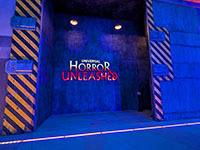
I remember not that long ago that Microsoft was using the Kinect to create a form of Augmented Reality in our living rooms. The project was called IllumiRoom for those who don't remember or have a strong Google-Fu. The idea behind it would be that by using the Kinect and a video projector you could expand out the screen of your game to add an extra level of immersion. The Kinect would 'scan' the area to get a digital mapping of your play space so that the projector could properly display no matter the contours or set up of anyone's living room or gaming space. It looked like a cool little add-on but shortly fell flat or just out of the limelight as I haven't heard a thing about IllumiRoom since April of 2013.
That was at least until the following demonstration of Microsoft's RoomAlive that you can see below. It looks like that proof of concept from IllumiRoom was expanded to cover the whole room and not just one wall. On top of that, RoomAlive expanded it to have a nice little plugin for Unity to make things easier for developers to use RoomAlive to its full advantages. To that extent I would guess it could also use the same tech to continue forth for all of us gamers who want to only worry about one wall in our rooms and not all four or more. Here, have a look at the tech demo for RoomAlive that was recently shown to the world.
So RoomAlive looks like a nice push forward in advancing how we can play and interact with our video games but I wouldn't put too much faith into it revolutionizing anything yet. It is still a proof of concept but with how difficult it looked to project and spatial map out a very bland and empty room, how long will it take to perfect your average gamer's gaming cave? I know mine is nowhere near as white and nowhere as uncluttered with cool gaming gear, posters, and all the stuff that comes in those amazing collector's editions of games. RoomAlive looks to be aimed at a different type of gamer than I am when it comes to just personality and aesthetics.
There is the large bonus, although I'm sure it will be costly, that it is being aimed to allow your average user to build and install the whole RoomAlive system. It will be the cost of six Kinects and six projectors that will make the whole RoomAlive project out of scope for your average gamers. Maybe it is something that all those devs at Ubisoft will be burning money on as I mentioned before. Just for the Kinects alone you are looking at about $600 USD and I don't see this being common place anytime soon even if they move past the proof of concept with RoomAlive here.
None the less, RoomAlive does look like we may be one step closer to those Holodecks that I've been waiting for. Sure we may still be punching and shooting our walls or those of an arcade that may set one of these up but it is the push forward to make our gaming rooms come alive that brings us one step closer. Now we just need to learn how to make light solid without burning the fragile skin of humans, animate that, and then add in environmental effects and we are solid. Get cracking all you devs and researchers out there!













































